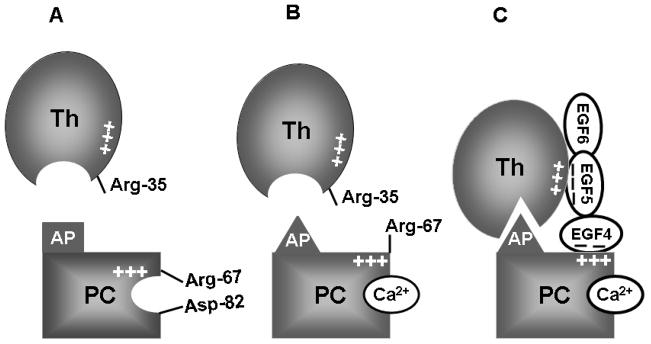Fig. 3.
Hypothetical model of protein C activation by the thrombin-TM complex. (A) Arg-67 and Asp-82 are involved in electrostatic interactions in the zymogen protein C in the absence of Ca2+. The activation peptide (AP) of protein C is not complimentary to fit optimally into the active-site pocket of thrombin in the absence of Ca2+. (B) The binding of Ca2+ to the 70-80-loop of protein C disrupts the salt-bridge/hydrogen bond between Arg-67 and Asp-82, thereby relocating Arg-67 to an inhibitory position for interaction with thrombin in the absence of TM. The metal ion also induces conformational change in the activation peptide of protein C, which is still not complimentary for the active-site pocket of free thrombin. (C) The acidic EGF5 domain of TM binds to exosite-1 of thrombin and the acidic EGF4 domain binds to the basic exosite of the Ca2+-stabilized protein C (including Arg-67), thereby altering the conformation of the active-site and/or the extended binding pocket residues of thrombin (including Arg-35), thus facilitating the docking of the activation peptide of protein C in the catalytic groove of thrombin (see the text for further details).

